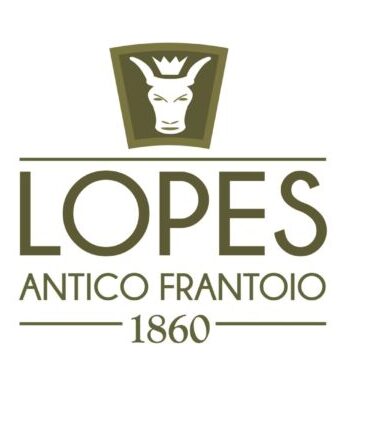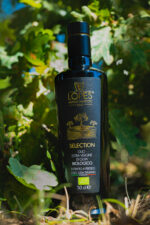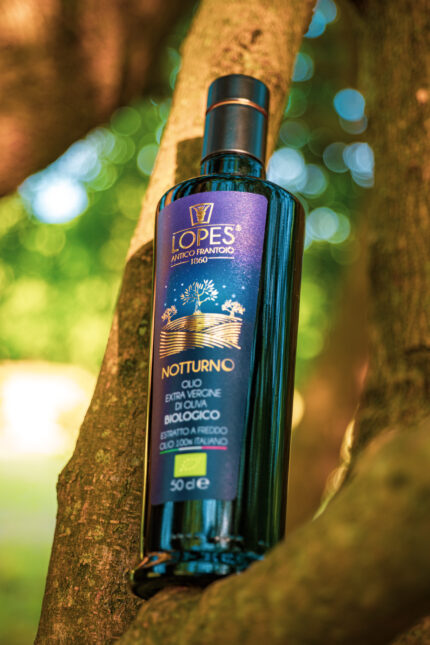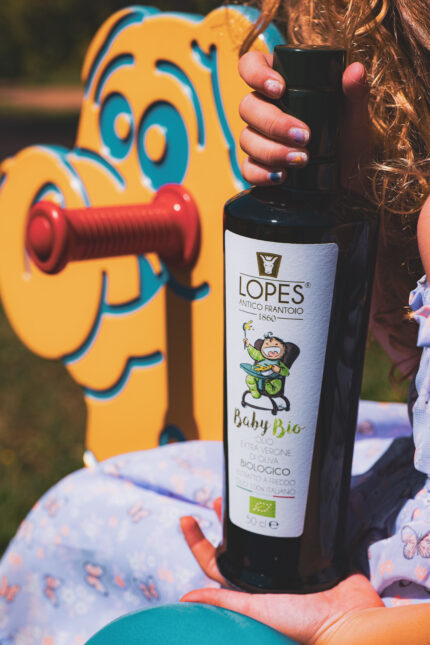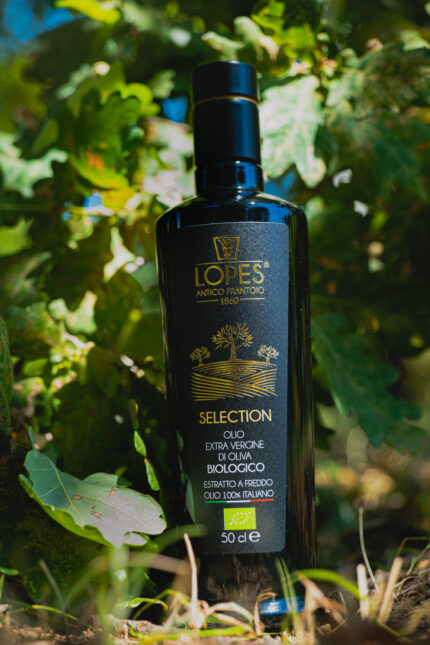Olio Extravergine d’Oliva Biologico Selection
€ 18.00
Blend ottenuto da olive Dolce di Rossano, Coratina e Biancolilla, dal colore verde energico, dal sapore fruttato medio con un livello equilibrato di amaro e piccante, con sentore prevalente di mandorla fresca e pinoli, oltre che di erba, carciofo e pomodoro.
| Peso | 0.5 kg |
|---|
Categoria: In Bottiglia
Prodotti correlati
Olio Evo Bio “Calliano”
€ 18.00
Olio Extravergine d’Oliva Biologico Notturno
€ 18.00
L'Extravergine Notturno da Agricoltura Biologica è giallo dorato intenso con delicati riflessi verdi, limpido. Al naso è ampio e avvolgente, con sentori fruttati di pomodoro acerbo e mandorla, cui si affiancano note aromatiche di basilico e menta. Fine e complesso in bocca, aggiunge toni vegetali di carciofo e cicoria, lattuga e sedano. Amaro spiccato e piccante ben espresso e armonico. Si abbina a bruschette con pomodoro, carpaccio di pesce spada, insalate di carciofi, marinate di tonno, zuppe di fagioli, risotto con funghi porcini, polpo bollito, pollame o carni di maiale al forno, formaggi di media stagionatura.
Olio Extravergine di oliva Biologico Baby Bio
€ 18.00
 Baby Bio,
Baby Bio,
è un alimento indispensabile nell'alimentazione dei bambini. L'olio extravergine d'oliva, infatti, contribuisce alla formazione delle ossa, al processo di mielinizzazione del cervello e all'accrescimento; è, inoltre, un ottimo aiuto per le difese immunitarie. Il nostro Baby Bio ha un gusto delicato ed è preparato con olive selezionate a mano.
Dalla tradizione di nonno Luigi che faceva selezionare, per noi nipoti, le prime olive, nasce l'idea di BabyBio. Oggi continuiamo a selezionare a mano le migliori olive, unicamente dalla cultivar Dolce di Rossano, per ottenere un Olio EVO Bio dal sapore leggero e delicato, dal colore giallo con riflessi verdi, fruttato leggero, senza amaro né piccante, prelibatezza per i palati più esigenti, quelli dei bambini! Olio Extravergine di oliva Biologico Dianora
€ 18.00
Monocultivar di Dolce di Rossano, dal colore giallo con riflessi verdi, dal sapore fruttato leggero ed equilibrato di amaro e di piccante, con sentore prevalente di mandorla fresca e pinoli, oltre che di erba di campo e carciofo. Ideale per l'utilizzo in zuppe di verdure e piatti freddi. Ottimo sul pesce e sulle insalate.
